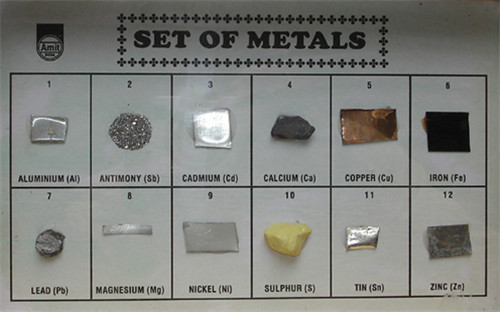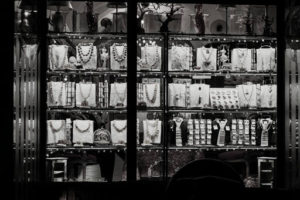Are you looking for jewelry metals list ? or searching for metals used in costume jewelry or in fine jewelry? You come to the right place.
In this post, you will learn:
What is the difference between elements and alloys?
What are base metals?
What are the Precious Metals?
What are Ethical & Green Metals?
What are Platings?
What’s the Difference between Gold Plate and Gold Fill?
What’s Metal Allergies?
What are Patinas & Oxidizers?
This is a long post, it may take 20 minutes to finish reading this post.
But I Believe you will learn a LOT from this post. Please Be Patient.
What is the difference between elements and alloys?

Metals are typically made out of elements or alloys. The difference is that elements refer to the over one hundred substances which cannot be chemically broken down into simpler substances or interconverted.
In essence, they are the primary ingredients if we can use that word, of matter. Elements are also the building blocks that we learn about in Chemistry. They include oxygen, hydrogen, iron, nitrogen, niobium, and copper.
An alloy, on the other hand, is a combination of two or more metal elements.
The mix is typically done to add strength or prevent corrosion. A favorite element that was used traditionally in casting alloys is Lead (Pb).
It is mixed with some metals to make them softer and also lower their melting point.
Now, lead causes health problems, especially in children. Many governments around the globe are now regulating the amount of lead that can be in any material, jewelry included.
Lead is typically safe for adults. The concern comes in when a child bites into or ingests a piece of jewelry.
That leads to what we know as lead poisoning that has adverse effects.
Combining elements to make an alloy usually happens between a less costly metal and something more expensive.
An example would be the combination of brass and gold (base metal and precious metal) to make some karat gold. Another example of an alloy is sterling silver.
Both engineers and jewelers create alloys to change the melting temperature, strength, or color of the metals. Even though 24-karat gold is a status symbol, the reality is that it’s too soft. When it’s mixed with other metals to become an alloy, it becomes of lesser karats.

What are base metals?
In the jewelry industry, this refers to all the metals used in making costume jewelry that does not fall into the category of precious or noble metals.
These metals are usually used as they are or plated. If a piece of custom jewelry is plated, it means that the manufacturer has taken a base metal and added a thin layer of silver, gold, rhodium, nickel, or other metals on top.
It can be on the surface of the finding, chain, bead, or other components of jewelry.
Common base metals
There are several base metals typically used in jewelry making. Let’s explore them below.
Aluminum

Aluminum is a soft metal and is ideal for embossing, layering, riveting, and metal stamping.
The reason why jewelers use it is that it does not rust, nor does it get affected when handling chemical substances that would typically darken other metals.
It does, however, oxidize when it comes into contact with water and oxygen. It then forms a layer of aluminum oxide (Al2O3) immediately that acts as a protective layer from further oxidation and potential rusting.
Some aluminum is colored. That gets achieved through anodizing.
Anodizing is regarded as the process of dipping metal into an electrically charged bath, causing the metal to change colors without having to paint the surface or do plating.
It is also considered an electrochemical process used to convert the surface of the metal into a corrosion-resistant oxide finish. That gives it a bright permanent color.
Do, however, keep in mind that aluminum is a soft metal and if not taken care of, you can easily scratch the anodized layer. Overall, the jewelry should keep its look for a long time.
Another way to add colors to aluminum is through the use of paints, Vintaj’s faux patinas, and Ranger alcohol inks.
These are made from modern technology and thus prove to be reliable. It is recommended that you avoid traditional jeweler’s chemicals, Win-Ox™ included.
Brass

Brass is a copper and zinc alloy. There will be varying percentages of each element that make the alloy, but typically you’ll find that jewelers use 70 percent copper and 30 percent zinc.
For example, the red brass wire in our collection is made of 90 percent copper and 10 percent zinc. It gets done so that it gives the metal a warmer color.
Raw (unplated) brass usually has a similar tone with yellow (plated) findings. They sometimes vary in color, and can even work well with gold plated components.
When brass is unplated, it usually requires polishing because it has an imperfect finishing. It also changes color with age. Tarnish-resistant (anti-tarnish) brass, a proprietary alloy, looks quite close to the color of 14k gold.
Copper

Copper, in its natural element, is right reddish-orange. By itself, it is a reactive metal. It darkens over time, developing a patina, which refers to the green or brown film that forms on the surface due to oxidation.
Copper is also known to discolor the skin, especially when worn tightly either as a ring, bracelet or anklet.
In general, copper is a soft metal, making it great for wire wrapping. Solid copper components also tend to bend easier because of this softness as compared to copper plated findings or beads.
When unplated, copper is also referred to as bare or raw copper.
Nickel

Also known as German silver, this is a base-metal alloy consisting of copper and zinc. It is silver in color, making it look like sterling silver.
There are various compositions of nickel. Ours is in wire form and has 65 percent copper, 18 percent nickel and 17 percent zinc.
Nickel is quite inexpensive compared to sterling silver, which makes it the go-to metal of choice for jewelry makers in manufacturing various components in jewelry.
A word of caution: Nickel is considered an allergen. For that reason, selling nickel jewelry in the EU might be difficult.
Niobium

Niobium is a metal usually used in making medical implants. Reason for it is because it is highly resistant to corrosion and other chemical reactions.
In jewelry, niobium comes in several anodized colors. These colors do not fade or chip.
Niobium has a unique color, and it doesn’t match the essential gold and silver colors we see other components of jewelry making come in.
The metal, however, is an inert element, meaning it is not chemically reactive.
It is also an element, so those purchasing jewelry made of niobium don’t have to worry about the reactions that other metals like copper, nickel, or lead bring.
Pewter

Pewter is a tin with copper and antimony alloy. Traditionally, pewter contained lead because it helped lower the melting temperature, and it was inexpensive. As discussed, lead proves a health hazard and is no longer used to as part of this alloy.
Pro tip: If you’re purchasing pewter from a vendor selling it at ridiculously lower prices than others, it likely contains lead. Steer clear of such purchases.
TierraCast products are lead-free pewter. Their pewter is called Britannia and jewelry made from it will typically have a finish of a different color.
Our company makes base-metal items out of brass or zinc alloy, and they have antiqued pewter plating. For the most part, the brass or zinc offered is lead-free
Steel

When we talk of steel, it is a blanket term used to refer to a wide variety of tough iron-based alloys.
Cold-rolled steel is made when the metal is below its recrystallization temperature, which is usually at room temperature. When making sheets, the metal is pressed between rollers in a factory to flatten and form a thin sheet.
The process is typically cold pressing which tends to make the metal 20 percent stronger than when using the hot pressing method.
The surface is also extremely smooth and has a uniform finish. When used in making small products, you’ll find that they are quite strong.
There are various kinds of steel available. There’s AFNOR XC45 steel, cold-rolled steel made of both of XC45 and XC75 (AFNOR) steel, also referred to as 1045 steel and AISI 1078 steel, respectively.
This carbon steel alloy is nickel-free, meaning it meets the EU Nickel Directive standards. Overall, you’ll find that jewelry findings made of AFNOR XC45 steel provide superior quality in shoe clips and French barrette backs.
Another aspect to know about carbon steel is that it has a carbon content of 2.1%.
It also has a variety of other elements besides iron and the carbon itself. The higher the carbon percentage in carbon steel, when it goes through heat treatment, it becomes harder and stronger.
The flip side of that is it becomes more brittle. Compared to stainless steel, carbon steel has a matte finish instead of a shiny one.
Stainless steel, which is also called corrosion-resistant steel, is the generic name given to any steel alloy that has 11.5 percent chromium (in weight) and above.
When you want to make a purchase, you’ll come across various grades labeled 304L, 316L, 440, and 904A.
The reason chromium gets used is that it creates a very thin surface layer of chromium-oxide that stops the stainless steel from rusting.
What makes stainless steel better than plated steel is that the former has a self-repair element to it.
When scratched or damaged a new layer of chromium-oxide will form on the item. If the same thing happens to plated steel, the steel underneath gets exposed to corrosion and rusting.
You, therefore, want to opt for stainless steel with a higher percentage of chromium for added resistance to corrosion.
Other metals do get added to this alloy to give it added properties. It includes strengthening it or so that it becomes more malleable.
Though we’ve stated that nickel is not a metal accepted in some places in the world, it usually gets added to strengthen the protective oxide layer that forms on the stainless steel.
On finished jewelry, the stainless steel finding is slightly grayer, but it is hardly noticeable. It does, however, look visibly different from sterling silver or silver plated metals.
The 304 stainless steel is considered the most popular grade of stainless steel.
It is composed of 18-20% chromium, 8-10.5% nickel and 0.08% carbon, as well as iron and the trace elements listed.
This type of stainless steel is common in the food industry for making products such as canned beers, brewing, coffee cans, sinks, fruit containers, and the like.
It works best because of the corrosion and stain resistance we’ve mentioned above. It’s these same properties that make it ideal for jewelry making.
304L stainless steel is similar to 304; the difference is that it has a lower carbon content of 0.03%. It also has a slightly higher amount of nickel, which is 8-12%.
It’s easier to use when welding and also resistant to corrosion.
In jewelry making, it is usually used to make men’s pieces. The 430 stainless steel has 0.75% nickel or less, allowing them to meet EU nickel directive which entails having less than .05% nickel ion migration.
This stainless steel is quite good when it comes to corrosion resistance than non-stainless steel. The only drawback is that it’s not as good compared to 304 and 316 alloys.
It also translates to it being less popular in making jewelry despite its low nickel content. It is still, however, use to make bead caps and earring findings.
Next, we’ll look at surgical stainless steel. There are 316 and 316L surgical stainless steel, and they contain 2-3% molybdenum.
That gives it added resistance to harsh corrosives both in industrial cleaning agents and in the body.
This type of steel contains nickel, and in the variety used in jewelry making, it holds up to eight percent nickel.
The 316L has less carbon than the 316 stainless steel. It is frequently used in making stainless steel watches and also in marine applications. It does contain 8-10.5% nickel and makes it unsuitable for those with nickel allergies.
Titanium

Titanium is an extremely strong metal that’s resistant to corrosion. These properties make it frequently used in medical implants.
It makes an excellent alternative for people allergic to nickel. In our production, we have ear wires and earring posts made of Grade 1 ASTM F67 titanium.
It is pure titanium and thus automatically meets the EU Nickel Directive. The earring posts have either a Brittania pewter pad or made of stainless steel 430 flat pads.
White metal and pot metal
“White metal” and “pot metal” refer to tin-based alloys that get used in the low-temperature casting of jewelry components made of base metal.
The white metal is silver in color, and it is what you find used in making costume jewelry and base-metal findings.
Castings made from this metal are usually three-dimensional instead of flat. They are also often plated. The composition of the white metal varies depending on manufacturers.
What are the Precious Metals?
Precious metals refer to rare metals that have high economic value.
It includes gold, silver, and platinum. A ‘noble’ metal refers to metal that is highly resistant to corrosion, and it doesn’t have to be a precious metal.
However, gold, silver, and platinum are considered both precious and noble metals.
When there are prices fluctuations in the market, the impact gets primarily felt in gold filled, sterling, and 14kt gold sheets, wire, beads, and findings.
These prices also affect the prices of gold or silver plated base metals items.
Sterling silver

One of the precious metals includes sterling silver which is sometimes stamped .925.
That means it is an alloy of at least 92.5% silver and copper.
It is soft, making it easy to work with. It can be either be polished to give it a bright shine or antiqued to give a dark black color.
Argentium

Argentium® sterling silver is a type of metal that is tarnish-resistant.
It contains 92.5% silver, 6.3% copper and 1.2% germanium.
What makes Argentium attractive for the end user is its tarnish-resistant quality, which makes it low maintenance compared to traditional sterling silvers.
Metal workers also prefer Argentium because it doesn’t develop firesales, saving artisans’ time.
It is also environmentally friendly compared to the traditional sterling. One can equally make Argentium twice as hard as the as standard annealed sterling silver through heat treatment.
One can also do intricate designs on Argentium that is harder to achieve in other metals because it is laser weld-able.
Fine silver

Fine silver is 99.9 percent pure silver, which earns in the stamp .999.
It is softer and increasingly malleable that sterling is. An advantage of silver is that it takes longer for it to get damaged or tarnished.
Findings and wire made of fine silver are compatible with Precious Metal Clay and Art Clay™ Silver.
Silver fill
There is also silver fill layered on based metals. The fill is made of .925 sterling silver or .999 fine silver which is heated and applied on the less expensive metal using pressure.
The result is plating that is more than a hundred times thicker than doing silver plating. Though there is currently no industry standard of what the silver fill should be, our brand ensures that the components layers with it are at least 1/20th silver in weight.
Vermeil, Pronounced “vehr-MAY, Vermeil is a plating of karat gold done over sterling silver.
Gold

When we say that something is made out of pure gold is 24kt, it means it has 24 out of 24 parts of it are gold.
As stated, as it is, it is too soft to be functional, and that is why it is alloyed with other metals for cost purposes, durability, and color.
In the case of 14kt, it means it has 14 parts gold out of 24. The remaining ten parts get made of other metals.
The other parts could be made of manganese, palladium, silver, tin, zinc, and nickel, depending on the color of gold you want to achieve. Typically gold alloys are yellow, white, rose or green.
Until recently, most of the white gold in the market contained nickel, but that has changed. The replacement for it is palladium which has little to no chances to react on a person’s skin.
Gold fill
Also known as a gold overlay, gold fill is heated karat gold that gets layered under pressure on a cheaper base metal.
The minimum requirement of a layer of karat gold fill is 1/20 of the items total weight.
It is what gets used in the wires, beads, and jewelry findings we have available. The surfaces of gold-filled items can be made of 10kt, 12kt, or 14kt gold.
Unless otherwise stamped, the thickness of the layer is the stated 1/20. However, there are cases where you can get the gold fill being a 1/10 of the items total weight.
Gold-filled base metal sheets can come in two varies. It can either be single clad, where gold is visible only on one side, or double clad, where the gold is on both sides and sometimes on the edges.
The gold fill in single clad and double clad contain the same 1/20 of the total weight.
For tubing and wire, the technique is called seamless, meaning that gold touches the body of the base metal.
Both double clad and seamless items are less likely to discolor because the base metal is sealed inside by the gold.
You are, however, to be careful when buffing gold-filled items to avoid removing the gold layer.
What are Ethical & Green Metals?
The terms “ethical metals” and “green metals” describe the metals made from existing materials, which is different from newly mined metals.
From times past and even in the present, gold and silver have been recycled from scrap electronics, jewelry, photo processing, industrial scrap, and other sources.
We work with suppliers who use recycled silver in making their silver sheets. We know this because we asked them.
The excellent thing about recycled silver is that once it is cast, stamped or milled, one cannot tell the difference between it and newly mined silver.
The flip side is that you have to take a suppliers word when they call their products green or ethical metals.
It is, however, likely that they are truthful given the high prices of precious metals in the market.
What are Platings?
Plating is the word given to the layer of metal applied on the surface of a different material, typically one that is cheaper and of lesser quality.
Plating can get done over base metals or even plastics. Plating happens before the final step of coloring.
When looking through a catalog, it might be hard to know what type of plating will best match the jewelry you’re trying to make. Below are definitions of the various platings you’ll find in our catalog; they mean somewhat same across the industry
Word of caution: When wearing gold plated jewelry, ensure it doesn’t come into contact with hand lotion as it accelerates the tarnish on gold plated components, making it look black after a few days.
White plate: this is the silver color that you see on most costume jewelry as well as base-metal findings. The plating is typically an imitation of rhodium comprising of tin, zinc, copper, and/or nickel.
However, many white-plated TierraCast® components in the market have real rhodium over a nickel base. Overall, rhodium tends to look close in color to real silver than other white platings in the market. It is, however, still grayer that the genuine silver.
Silver plate: This is a thin surface layer of silver. It is the best match color-wise of sterling silver. It also looks distinctly different from white findings. Silver plate findings have to be lacquered for durability because they tarnish as much as sterling silver does.
Antiqued silver plate: This is a thin surface layer of darkened silver. The purpose of darkening it is so that it has a “distressed” (oxidized) appearance to it.
Antiqued pewter plate: This is pewter-colored plating darkened to provide the “distressed” (oxidized) appearance. The antiqued pewter beads and findings can either be matte or shiny.
Yellow plate: This refers to the gold-colored plating. It is also more durable than a gold plate, and finishing of the same go best with raw brass.
Gold plate: This is a very thin layer of real gold (about 1/1,000 – 1/1,000,000 of an inch) and is different from the gold fill. The color of this plate matches that of 14kt gold.
Heavy gold electroplate might 3mils or 3/1000s of an inch thick. Many gold-plated items have a white nickel plate right underneath the gold and above the base material.
Gilt: This is a very thin finish of gold color and not real gold.
Vermeil: This is a plating of karat gold over sterling silver
Antiqued gold plate: This is a very thin surface layer of real gold that is about 1/1,000 – 1/1,000,000 of an inch. It is darkened to provide a “distressed” (oxidized) look.
Antiqued brass: These refer to components that have a brass or zinc base and brass plating. The crevices of antiqued brass charms, beads and findings are also darkened for that “distressed” (oxidized) look.
Copper plate: This refers to bright, shiny copper plating. Copper plated items tend to be stronger than their pure copper counterparts because the metal underneath is usually harder.
Antiqued copper plate: Same as above but darkened to give a “distressed” (oxidized) look.
Gunmetal plating: It consists of black nickel plated over brass, but your manufacturer might offer plating that carries some gunmetal components to meet the EU Nickel Directive. Gunmetal varies in color; you can get it in gun blue, matte dark gray or even shiny black.
What’s the Difference between Gold Plate and Gold Fill?

When it comes to thickness, gold fill is 50 to 100,000 times thicker than gold plating.
Gold plating, on the other hand, is about 17 to 25,000 times thicker than a heavy gold electroplate.
In the case of silver, the fill is 100’s of times thicker than plating. For more information, visit artisanplating.com.
Metal Allergies
Nickel is the metal that causes the most allergies compared to other metals.
People with less sensitivity can wear surgical stainless steel for a few hours to a full day without getting a reaction.
However, more sensitive people coming into contact with nickel in watches or even Levi’s buttons can cause an immediate reaction.
The alternative for people with nickel allergies is to opt for niobium, karat gold, sterling silver or titanium earring findings, or nonmetal earring findings.
Even when you see the label “nickel free” on metallic items, the reality is that it can contain nickel.
In this article, we have mentioned the EU Nickel Directive. It refers to the amount of nickel released onto the skin (migration limits) and not the percentage of nickel in an alloy.
In The US, nickel is allowed in jewelry components as they have not come up with a standard yet.
Therefore, if you’re marketing to countries in the EU, you have to ensure that your products are compliant with the EU Nickel Directive. For other territories, compliance is not necessary but welcomed.
Hypoallergenic, a popular marketing term, does not have a legal definition. When a customer asks you for hypoallergenic jewelry, it is best to assume that they are looking for nickel-free options.
Metal allergies are as complicated to food allergies because not everyone is allergic to the same thing.
Patinas & Oxidizers
Another phrase used in the article is patina. It refers to the corrosion or oxidation that takes place on the surface of a metal.
In iron, rust appears, in silver, it is tarnished. Patinas often form naturally after prologue exposure, but the same look can be created artificially for that antiqued or distressed look.
Antiquing solutions, also known as oxidizers, are what jewelry makers use to add a patina to metal beads, findings, and charms.
Conclusion:
Holy God! You guys finished reading this long long long post. Learned something? If you love this post, please share this awesome post with your friends and coworkers. If you have anything to ask. Please leave a comment in the below section.





